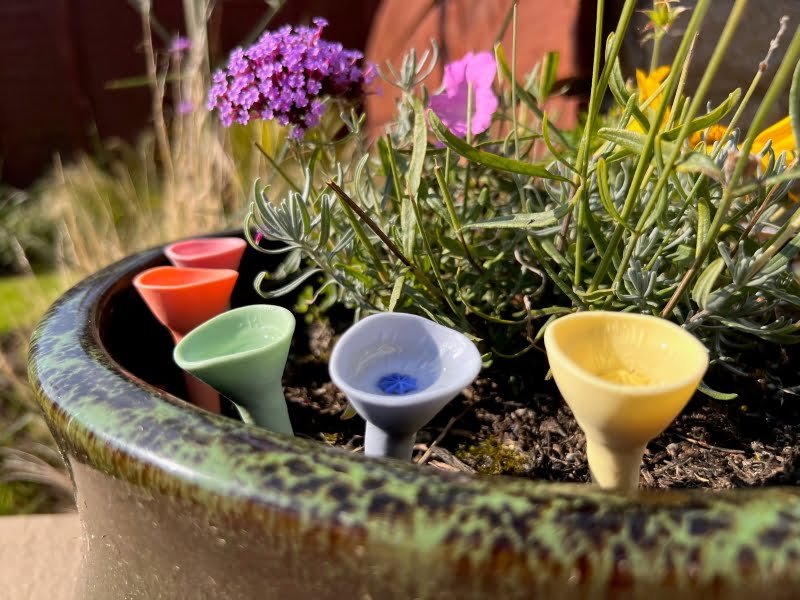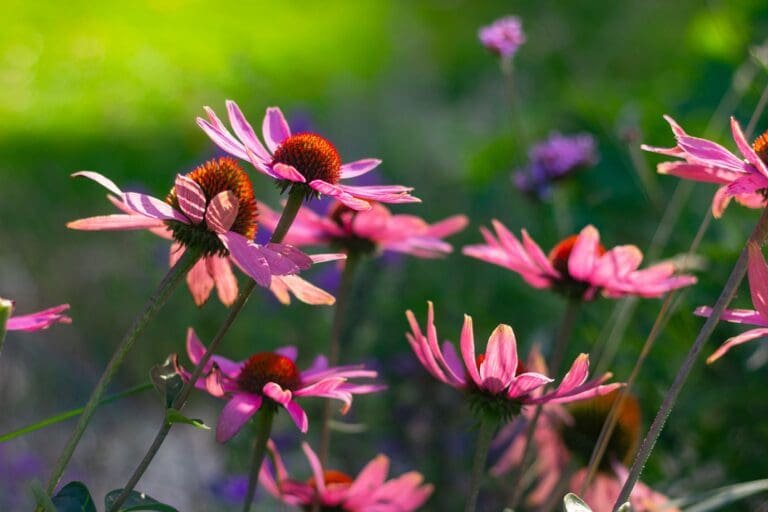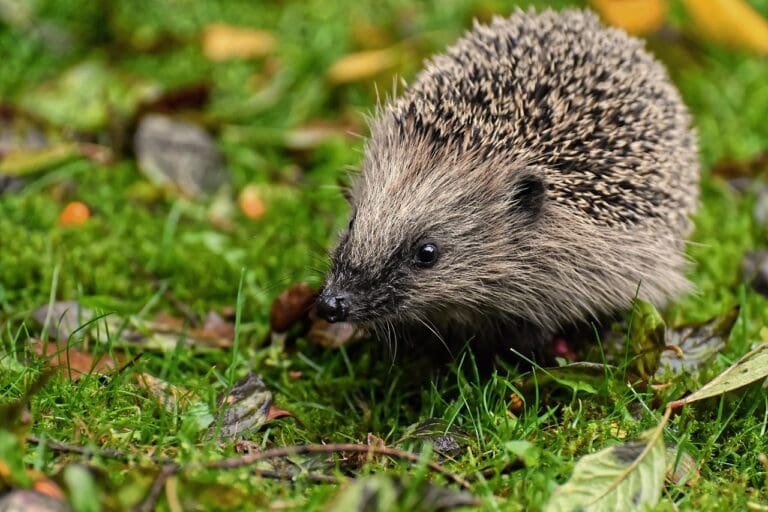Bee Cups are beautiful, handcrafted porcelain cups designed to quench the thirst of bees and other pollinators in your garden. These dainty cups each hold about a teaspoon of water — the perfect amount for a parched bee!
Bees are indispensable pollinators within our ecosystem, yet they confront a myriad of challenges, including habitat loss, pesticides, and climate change.
A frequently overlooked hurdle for them is the scarcity of accessible water sources during their foraging quests for nectar and pollen. Bee Cups present a fusion of art and innovation, catering to the hydration needs of bees and other garden visitors.
In this article, we’ll look at the beautiful design of these products and how they can make a positive impact on your garden and the world around us.
Top Tip
For a thriving garden buzzing with activity, pair your Bee Cups with pollinator-friendly plants like lavender and coneflowers.
Innovation Meets Artistry
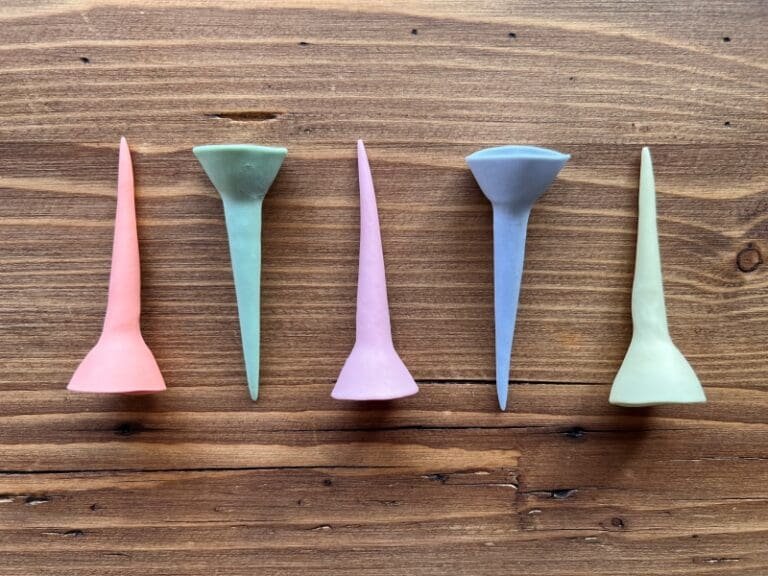
Aesthetics
Bee Cups for Thirsty Pollinators have an earthy, handmade charm. Their petite size gives them an endearing appearance. No two Bee Cups are exactly alike since they are individually handcrafted from porcelain clay. The natural colour variations in the manufacturing process make every piece unique.
With their charming size and looks, Bee Cups not only serve an important purpose but also add whimsical beauty to gardens and outdoor areas. The studio handcrafts each piece from porcelain clay and fires them at over 2200°F for durability.
The organic artistry of Bee Cups sets them apart from mass-produced garden products. They really feel like miniature works of art for your garden.
Functionality
Bee Cups are designed to easily poke into the ground or can be placed in planters. Their conical shape allows them to collect rainwater or they can be easily topped up during hot dry spells. The shallow reservoirs with special UV glazes aim to attract pollinators close-by for quick sips of water.
Bee Vision Glazes
An innovative feature of Bee Cups is their UV-reactive “Bee Vision” glazes. These special glazes glow under ultraviolet light, which bees can see but humans cannot. So, while the glazes appear clear to our eyes, bees see them as bright attractive patterns against the green foliage.
The Bee Vision glazes essentially turn the cups into artificial flowers, grabbing the attention of passing pollinators. This makes it more likely for foraging bees to spot the cups and stop for a quick drink along their journey.
Bee Cups for Thirsty Pollinators: Our Experience
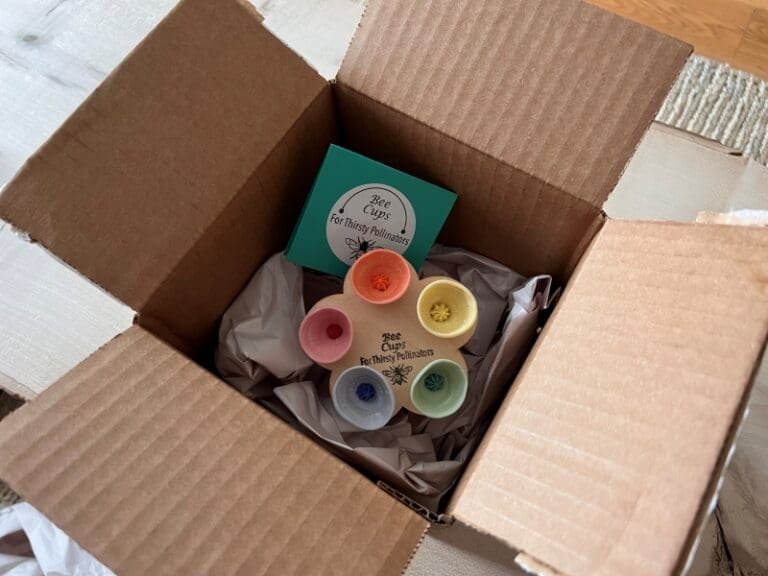
We were delighted when our set of Bee Cups arrived in perfect condition all the way from the USA to the UK. They were extremely well packaged so that each unique piece arrived intact.
Unsure whether these small cups would actually attract bees, we initially placed them in flowerpots just to enjoy their appearance. But the next day we were amazed to see bees and wasps frequently stopping to take sips.
We periodically peeked out the window to watch the bees and wasps landing on the cups for quick water breaks before buzzing back to the flowers.
Importance of Water for Bees
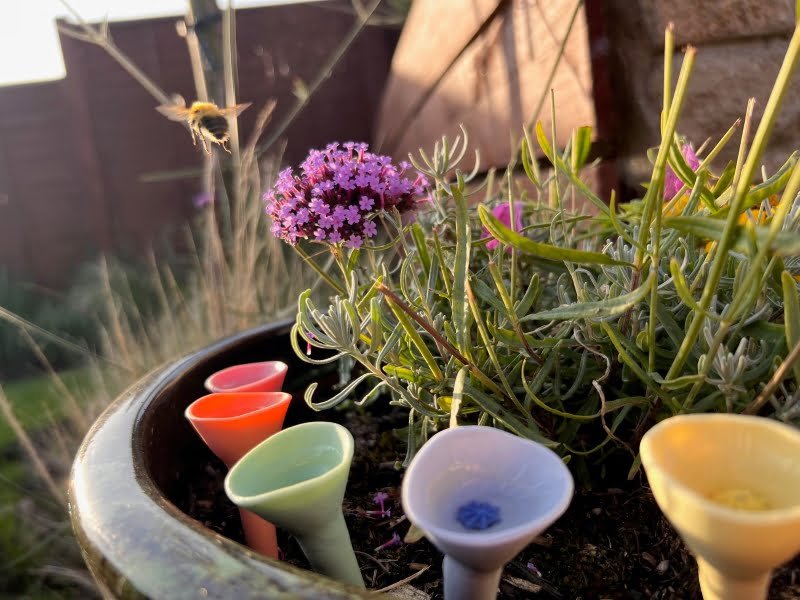
To understand the value of Bee Cups, it’s helpful to know why access to water sources is so vital for bees.
Bees Role in the Ecosystem
Bees play an incredibly important role as pollinators for flowering plants, trees, fruits, vegetables, and more. Their work propagating plants is crucial to the diets of humans, wildlife, and livestock. Bees are essential for healthy natural ecosystems that sustain life.
Challenges Finding Water
When foraging for nectar and pollen, bees can only gather small amounts of water from those sources. But bees require water to maintain temperature regulation in their hive and feed their larvae.
Bees can struggle to find adequate water sources nearby while foraging. They expend substantial energy flying back to their hive or to distant water sources many times, reducing pollination efficiency.
Bee Cups for Thirsty Pollinators: Practicality and Benefits
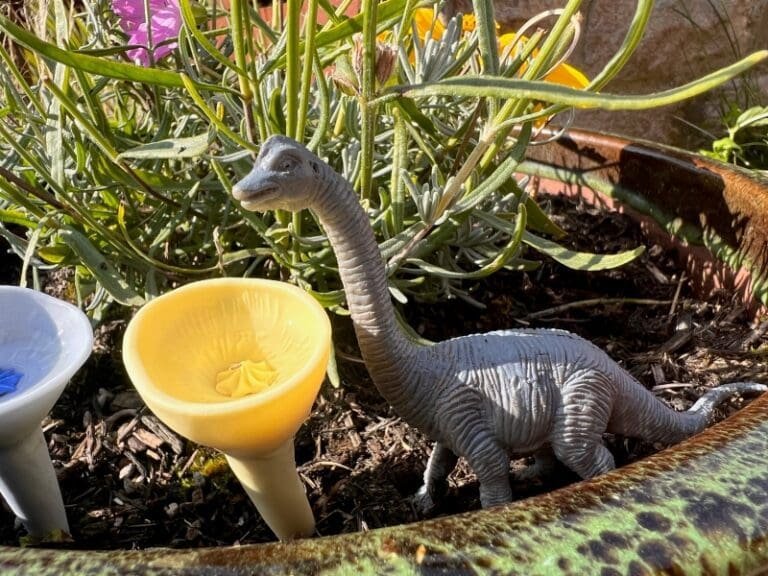
Bee Cups offer a straightforward, low-maintenance way to set up micro-watering holes that appeal to bees’ preferences and biology.
Easy To Install
Bee Cups are simple enough for children to install and observe. Our 5-year-old son loved placing his new ‘bee cups’ around our garden to ‘feed the bees’ – although he was adamant, we must also use them to hydrate his toy dinosaurs!
Duration of Water Retention
The shallow, thimble-sized cups provide just a taste of water for bees to sip. The open tops also allow for rapid evaporation. This prevents the cups from becoming mosquito-breeding sites.
In most climates, the teaspoons of water remain for bees to access through the day but dry out by nightfall.
Benefits for Gardeners
By providing bees water sources close to flowers, Bee Cups can increase pollinator visits to your garden. More bees working your blossoms translates into better fruit and vegetable yields.
Observing bees up-close gathering water and nectar is a joy for gardeners and nature lovers. Bee Cups invite more bee activity into your outdoor space for you to delight in.
Bee Cups for Thirsty Pollinators: Environmental Considerations
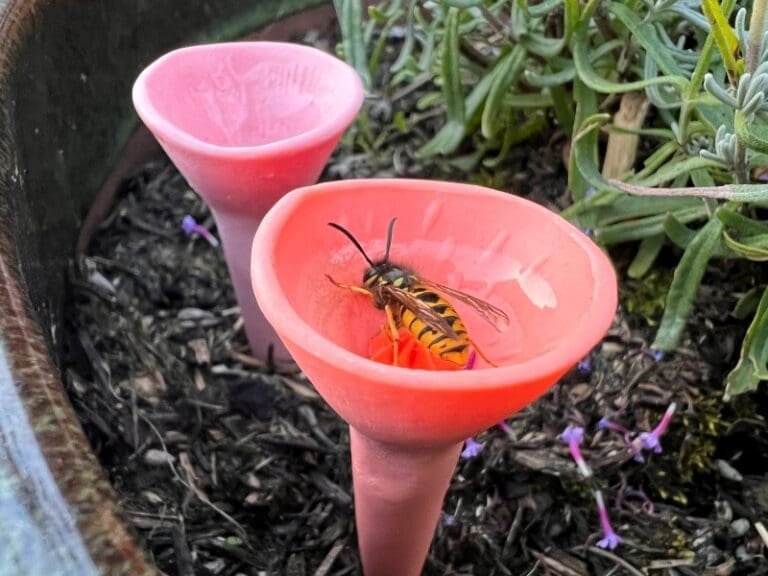
Bee Cups aim to aid bees in an eco-friendly manner by using natural materials that avoid contaminating the soil and water.
Durable Materials
The porcelain clay Bee Cups are fired at over 2,200°F, making them durable for outdoor use. With proper care, they can last for many years while maintaining their integrity. Bee Cups use no plastic components. As pure porcelain, they do not leach any chemicals or toxins into the soil or water collected.
Energy Conservation
Providing tiny, garden-side water reserves can reduce how far bees need to fly for water. This helps conserve their energy for pollinating rather than expending it on long water-gathering flights. Placing Bee Cups among your flowers assists your local bee population instead of depriving neighbouring areas of pollinators.
Pricing and Availability
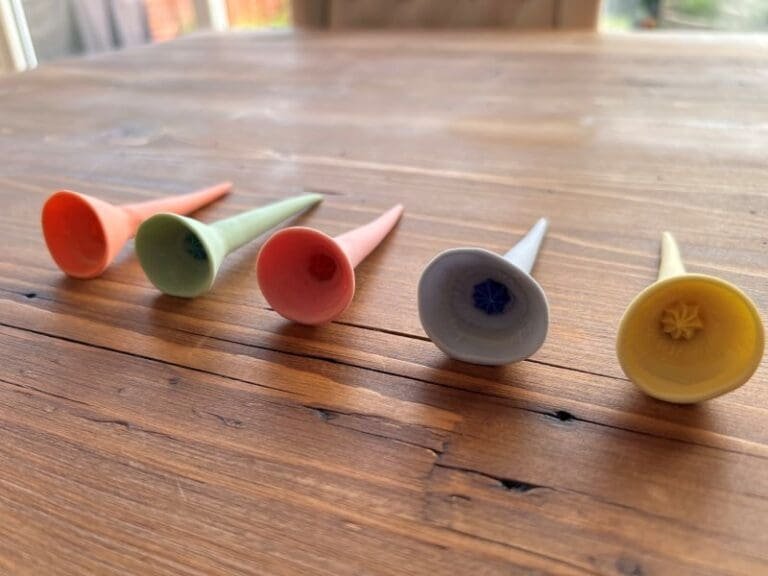
You can purchase Bee Cups directly from the company’s website.
There are a range of different pack sizes available in a wide range of colours and price points. We opted for the Bee Vision Variety option, which includes 5 Bee Cups in different glowing colours. The varied hues complemented each other really well in our garden.
Final thoughts – Bee Cups for Thirsty Pollinators
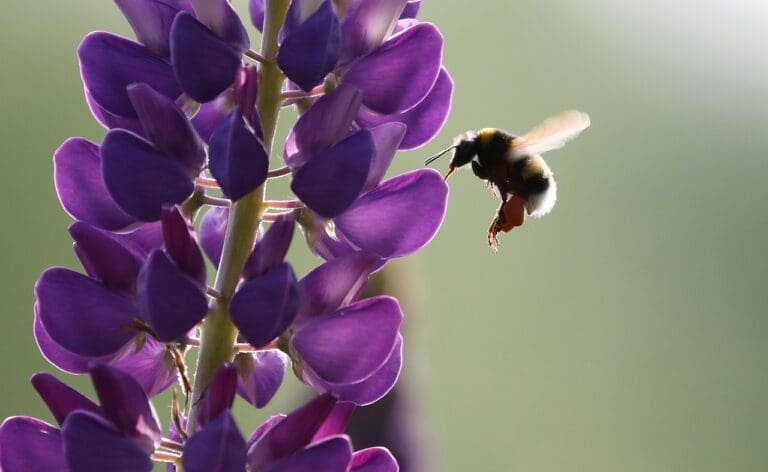
Bees and other pollinators are under threat worldwide from multiple factors. Providing natural, safe water sources in gardens enables bees to better sustain their populations and continue their vital pollination services.
Bee Cups offer an artistic and eco-friendly solution for supporting pollinators. These whimsical porcelain cups bring joy to your garden, quench bee thirsts, and foster biodiversity in your local ecosystem. Installing Bee Cups allows you to directly make a difference for bees while brightening your outdoor space.
Frequently Asked Questions
Q: Do bee drinking cups work?
Bee cups for thirsty pollinators are effective in providing essential hydration to bees. These cups are designed to hold a small amount of water, perfect for thirsty bees. Users have observed increased bee activity around these cups, indicating their effectiveness.
Q: What are bee cups for?
Bee Cups are designed to offer a water source for bees and other pollinators in gardens or outdoor areas. With their petite size, they hold just the right amount of water for bees, ensuring they stay hydrated while they’re busy pollinating.
Q: Should you put water out for bees?
Just like all creatures, bees need water to survive. While they get some moisture from the nectar they consume, having a direct water source can be beneficial, especially during hotter months. Providing water for bees can help them stay hydrated without straying too far from their hives or work areas, conserving their energy.
Q: Where do you put bee cups?
Bee Cups should be placed in a garden or outdoor area where you’ve observed bee activity. Ideally, they should be positioned near flowering plants to make it convenient for bees that are foraging. Ensure they are visible and easily accessible, avoiding dense or overly shaded areas.

